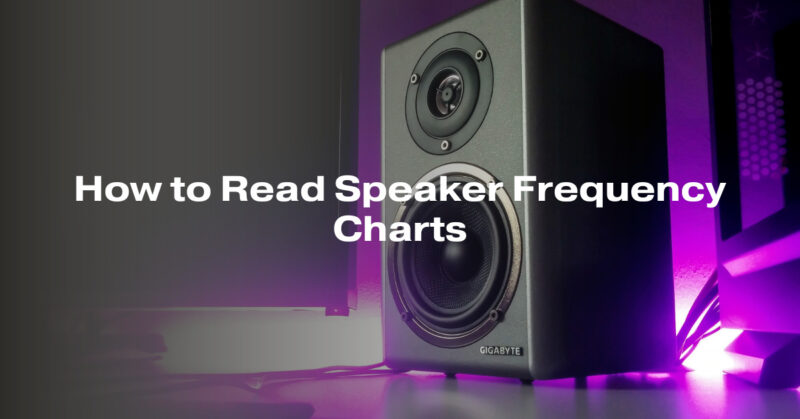Speaker frequency response charts provide valuable information about how a speaker reproduces sound across the audible spectrum. Understanding these charts is crucial for making informed decisions when selecting speakers for your audio system. In this comprehensive guide, we’ll break down the elements of speaker frequency charts, explain how to interpret them, and empower you to use this knowledge to choose speakers that best suit your audio preferences and needs.
Table of Contents:
- The Importance of Speaker Frequency Charts
- Why frequency response charts are essential for evaluating speakers.
- How frequency response impacts sound quality and your listening experience.
- Basic Elements of a Frequency Response Chart
- Identifying key components of a frequency response graph.
- The horizontal axis (frequency in Hertz) and the vertical axis (amplitude in decibels).
- The reference line: flat frequency response.
- Frequency Range and Measurement Scale
- Understanding the frequency range covered by the chart.
- The importance of a logarithmic scale for measuring amplitude.
- Flat Frequency Response Line
- The ideal reference line for a flat frequency response.
- Deviations above and below the reference line.
- Frequency Response Variations
- Peaks and dips in the frequency response chart.
- How variations affect the perceived sound.
- Identifying resonances and reflections.
- Crossover Points
- Marking crossover frequencies in multi-driver systems.
- The transition between drivers and its impact on frequency response.
- How crossovers contribute to a cohesive sound.
- Bass Roll-Off and High-Frequency Roll-Off
- Understanding the low and high-frequency limits of the chart.
- The roll-off slopes and their impact on bass and treble response.
- Selecting speakers with suitable roll-off characteristics.
- Speaker Component Contributions
- Separating driver contributions in multi-driver systems.
- How woofers, midrange drivers, and tweeters influence the chart.
- Ensuring a seamless transition between drivers.
- Interpreting Frequency Response for Different Applications
- Tailoring frequency response to specific audio applications.
- Home theater, music listening, and studio monitoring considerations.
- Achieving desired sound characteristics through frequency response.
- Common Mistakes and Misinterpretations
- Addressing common errors when reading frequency response charts.
- Debunking misconceptions about ideal frequency response.
- Conclusion
- Summarizing the significance of speaker frequency response charts.
- Empowering audio enthusiasts to make informed decisions when choosing speakers.
- Achieving the desired sound quality and frequency response for your audio system.
By the end of this guide, you’ll be well-equipped to read and interpret speaker frequency response charts, enabling you to choose speakers that match your audio preferences and application requirements. Whether you’re setting up a home theater, building a high-fidelity audio system, or designing a studio monitoring setup, mastering the art of reading frequency response charts will help you achieve the sound quality you desire.

